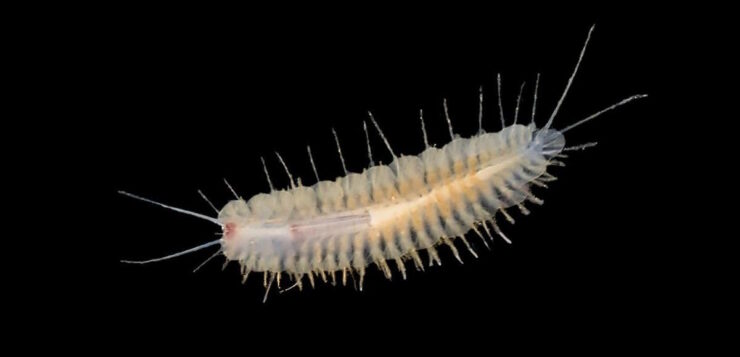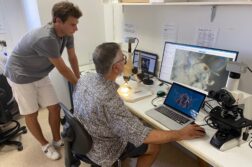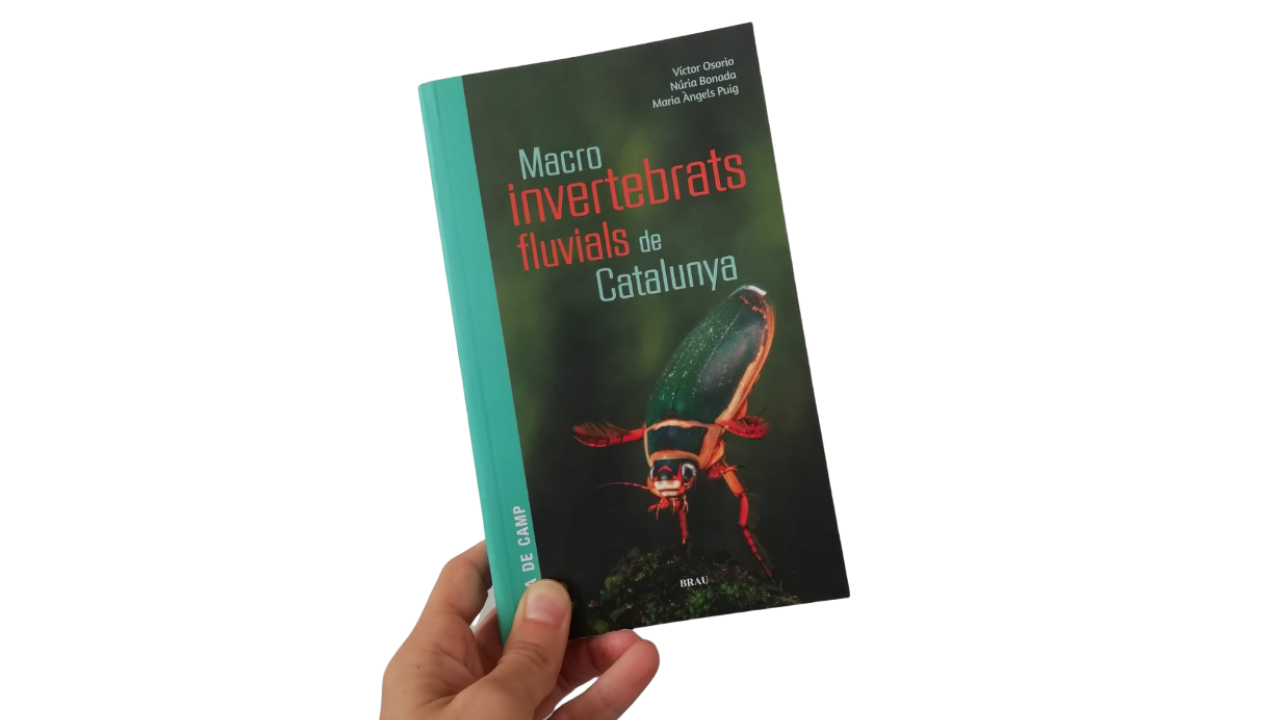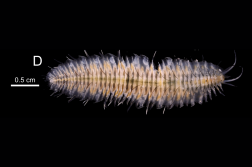A team of researchers has found marine worms never before described in a cave in Mallorca. The specimens present unique features that distinguish them from the already known polychaetes. The finding raises questions such as the origin and antiquity of these annelids.
A research team – led by the University of the Balearic Islands (UIB), the Mediterranean Institute for Advanced Studies (IMEDEA-CSIC), and with the participation of the Blanes Center for Advanced Studies (CEAB-CSIC) and the Consiglio Nazionale Delle Ricerche ( CNR) – has discovered new species of polychaetes in an anchialine cave on the island located in Mallorca.
These types of caves are apparently far from the sea, but they are filled with water distributed in two layers: the upper one is from rain, it comes from the surface. The lower one, is marine water, arrives, generally by slow filtration from the sea. The cave is very difficult to access, lacks natural light and, also due to its isolation, has few nutrients and dissolved oxygen in the water. For all these reasons, the entry and survival of organisms are very limited. Eighteen meters deep, under the sediments of the cave, live the polychaetes.
– The first, belongs to a species unknown until now. Its morphology differs from that of the species and genera already described. For this reason, a new genre has also had to be established. The annelid measures about two centimeters, has no eyes and is almost transparent (the brain is visible, characteristically pigmented with a deep red). The back is covered with scales, like the other members of the taxonomic group to which it belongs, commonly known as “scaly worms”. In addition, it has two pairs of parrot-shaped jaws. Although it lives in the sediment, with the advent of divers, it was able to emerge and swim rapidly with sinusoidal movements. Surprisingly, this annelid is related to lineages that habit the abyssal depths of the Pacific and the continental shelf of Antarctica. This suggests a possible very old connection, when the configuration of the continents was totally different.
– The second is a genus already known, but the species is new, never before described. It is included in the taxonomic group commonly known as “spaghetti worms” , because they live inside tubes built by themselves with the surrounding sediments and, under normal conditions, only their numerous long and thin tentacles are seen, with which they obtain food. It measures about two inches, although its body is very soft and contracts and stretches significantly. It is yellow, but also quite transparent and could be bioluminescent (it will be checked in future expeditions).
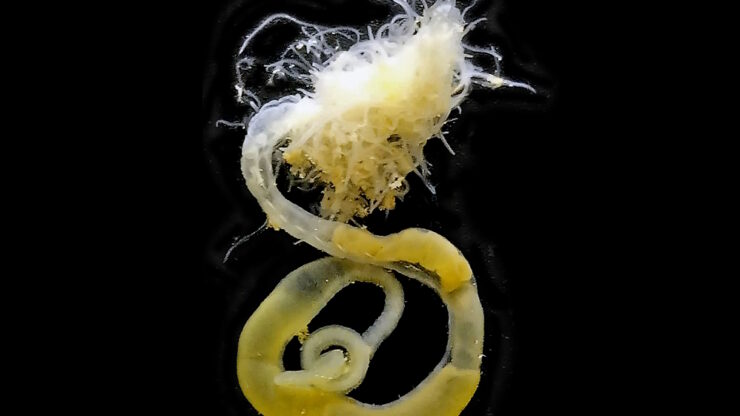
The same anchialine cavity has been the scene of a third find, but one of less taxonomic relevance. It is a polychaet that was already catalogued, but always in caves directly connected to the sea and in semi-dark environments of the rocky littoral. That is why the finding raises enigmas such as the way the worm has accessed the cave; the possibility that it happened a long time ago, when the level of the Mediterranean was higher; if it can truly be considered the same species as its marine relatives; or the question of how the two new species could have remained isolated if at some point there has been direct communication with open waters.
The story of the discovery began in 2019, with a first scientific expedition in the cave. A year later, the team repeated the dives. After that the research work has been carried out and has confirmed the discoveries.
This 2022 has been described one of the polychaets, the firts one. The UIB team has done it, led by Dr. María Capa. Currently, the scientists are studying the other ploychaets, and trying to solve the questions raised by the finding. This task is carried out with the research project that the spanish state has just granted within the framework of the “Generation of Knowledge” program. This project will allow more field work in the Baleric Islands caves to study their biodiversity.
Daniel Martin, a CEAB-CSIC researcher who is an expert in taxonomy and has identified more than eighty new species of marine invertebrates, co-leads this project with the UIB scientist. Explain that there is a great diversity of polychaetes in the world’s seas and that they all have an important role in nature. “They are one of the main sources of food for many other species. That is why they are widely used as fishing meals. Some are bioindicators, allowing early detection of environmental disturbances and helping to develop ecosystem conservation strategies. Others must be well controlled because they can be invasive. There are also those that are being studied for medical and pharmaceutical uses, including the synthesis of silver nanoparticles, suitable as drug vectors, for example to treat tumors without affecting the healthy tissues that surround them”.
The coordinator of the Balearic Center for Biodiversity of the UIB, María Capa, points out: “The fact that, at this point, we are discovering new forms of life confirms that there are places, such these caves, which are still very unknown. It is important to know them to value and protect them, especially in the climate change context that could endanger the persistence of these interesting ecosystems”.
The discovery was shared at the latest international polychaete congress held in South Africa this summer.
14th International Polychaete Congress
The scientific meeting was held in South Africa this July. María Capa and Daniel Martín have presented various communications; one of them focused on the discovery of the new species.
Within the framework of the Congress, a polychaete identification course was also carried out, transmitting the theoretical and practical knowledge necessary to be able to reliably catalog polychaets, avoiding errors that had occurred in the past, due to technical limitations and non-rigorous reference catalogs.
During the training, emphasis was placed on the advances that have revolutionized marine taxonomy and, specifically, the study of polychaetes, in recent decades. Some improvements that, as Martín (one of the course teachers) explains, “have made it possible to deny questions such as the existence of the same species of polychaete in the waters of South Africa and in those of the Mediterranean, at the same time that they have made it possible to discover relationships between polychaetes morphologically very different”.
The course highlighted the importance of using an integrative approach, combining traditional techniques –based on macroscopic observation of the morphology of organisms– with other more cutting-edge ones, such as DNA analyses.
All the teachers have agreed on the importance of preserving biodiversity and have underlined the relevance of taxonomy as an essential first step in any study that wishes to delve into the ecology of our ecosystems.


